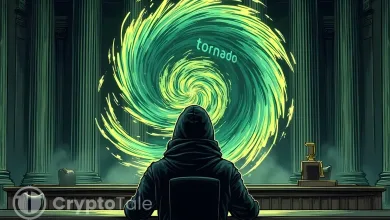Top Blockchain Trends to Watch in 2025: Why Are They Bigger?

Blockchain has had its most transformative phase yet, in 2025. What started as a niche technology powering Bitcoin has grown into a global infrastructure layer for finance, data, identity, gaming, sustainability, and artificial intelligence. In 2025, blockchain hasn’t just been about cryptocurrency speculation, it has been about connecting digital systems with real world value.
AI and Blockchain Integration
The integration of AI and blockchain is creating autonomous economic systems. AI agents can execute trades, manage liquidity, and issue loans through smart contracts without human input.
Platforms like Fetch.ai and HeyElsa are exploring AI wallets capable of optimizing returns automatically across DeFi protocols. Meanwhile, blockchain ensures data authenticity, solving AI’s biggest flaw, training model corruption. As AI models become decentralized and user owned, blockchain will act as the verification and payment model that keeps them trustworthy.
Real-World Asset (RWA) Tokenization
The tokenization of physical and financial assets is unlocking trillions in dormant value. Everything from real estate, gold, and U.S. Treasury bonds to fine art and agricultural commodities is being divided into liquid tokens. This lowers investment barriers and enables daily global trading of traditionally illiquid markets.
Major firms like BlackRock are already issuing tokenized funds, pushing this narrative into the mainstream. With standardized regulation emerging, RWAs are positioned to become the backbone of institutional blockchain adoption.
Decentralized Finance (DeFi) 2.0
DeFi is growing from experimental to institutional grade infrastructure. Instead of risky yield farms, users are now embracing liquid staking, restaking, and credit based lending models backed by real collateral.
Cross chain liquidity models are reducing fragmentation, while permissioned liquidity pools allow banks to participate legally. Insurance protocols, decentralized stablecoins, and bond marketplaces are replacing legacy systems one function at a time. The next wave of DeFi will emphasize security, sustainability, and compliance.
NFT Utility Expansion
NFTs have moved beyond static collectibles into functional access tokens. They are now used as event passes, loyalty rewards, proof of ownership certificates, and digital identity tools.
Brands like Starbucks and Nike are integrating NFTs into membership programs, rewarding users with exclusive perks. Dynamic, AI powered NFTs are growing in real time based on user engagement.
GameFi and Player Owned Economies
The GameFi model is changing from unsustainable play to earn to play and own sectors, where players genuinely control assets and economies. Instead of working for inflated tokens, users earn through staking, crafting, and autonomous marketplaces, similar to decentralized stock markets.
Successful blockchain games now prioritize gameplay first, DeFi second, making profit a feature, not the purpose. With major studios entering Web3, the next generation of gamers will expect ownership as a default.
Zero Knowledge Proofs and Privacy Infrastructure
Privacy is now a requirement, not a convenience. Zero Knowledge Proofs enable users to verify identity or transaction validity without exposing previous data. ZK-rollups are scaling Ethereum while preserving confidentiality, and ZK-based KYC allows compliance without surveillance. Government agencies and enterprises are beginning to adopt privacy chains, proving that blockchain can be transparent and private simultaneously.
Related: Succinct Labs CEO Says Zero-Knowledge As The Future For Blockchain
Layer 2s and Modular Blockchain Architecture
Scalability is no longer a dream, it’s happening. Layer 2 networks like Arbitrum, Optimism, and Base process transactions at fractions of mainnet costs while keeping Ethereum security.
Modular architectures separate consensus, execution, and data storage, enabling endless scalability without exposing decentralization. Chains like Celestia and Solana are pushing sub second finality, making blockchain competitive with Web2 infrastructure.
Interoperability and Chain Abstraction
The future of blockchain is chain sceptic. Users won’t care whether they’re transacting on Ethereum, Solana, or Polygon, the system will handle it automatically. Interoperability protocols like LayerZero and AggLayer are building seamless routing between networks.
Cross chain liquidity platforms like Kiwi allow trades to execute across multiple networks in a single click. Soon, blockchain will be as unified as the internet, invisible to the user but powering everything beneath.
Decentralized Digital Identity
Online identity is broken, centralized logins and repetitive KYC are inefficient and unsafe. Decentralized identity outlook lets users own their credentials and reuse them anywhere, without exposing personal data.
Standards like idOS and Polygon ID allow platforms to verify users without storing their information. In an era of AI generated deepfakes, DID is becoming the foundation of online authenticity.
Regenerative Finance (ReFi)
One of the fastest growing blockchain movements is ReFi, which focuses on aligning profit with environmental and social impact. Platforms issue tokenized carbon credits, allowing companies and individuals to avoid emissions transparently.
Renewable energy production is being incentivized through on-chain reward structures, enabling communities to crowdfund solar farms and eco projects. ReFi changes speculation into positive viewed economics, where sustainability becomes financially attractive.
Blockchain in Supply Chain and Logistics
Transparency is everything in global trade, and blockchain solves one of its biggest flaws: data trustability. From food safety tracking to luxury goods authentication, companies are using blockchain to trace products from origin to delivery.
Walmart, Maersk, and Nestlé are already onboard. With IoT integration, sensors now upload temperature, location, and handling data directly to blockchain, preventing fraud and ensuring compliance. This trend will become mandatory across all high risk logistics sectors.
Sustainable and Energy Efficient Consensus Models
The environmental backlash against Proof-of-Work mining pushed the industry toward energy efficient Proof of-Stake and hybrid systems. Ethereum move to PoS cut energy consumption by 99.95%, while new Layer 1s run entirely on renewable grids. Some networks even recycle heat from mining into public utilities, turning sustainability into innovation. As ESG regulations tighten, green blockchains will dominate enterprise adoption.
Meanwhile, Blockchain in 2025 is defined not by speculation, but by integration, privacy, identity, sustainability, and real world value. Whether through AI agents, tokenized assets, decentralized identities, or eco-driven finance, blockchain is transitioning from experimental to essential. Winners in this era won’t be those who wait for clarity but those who recognize that the framework of the future is being built and choose to go into it now.





